Instruction
Stickney: The evolution of necessary technology in golf instruction
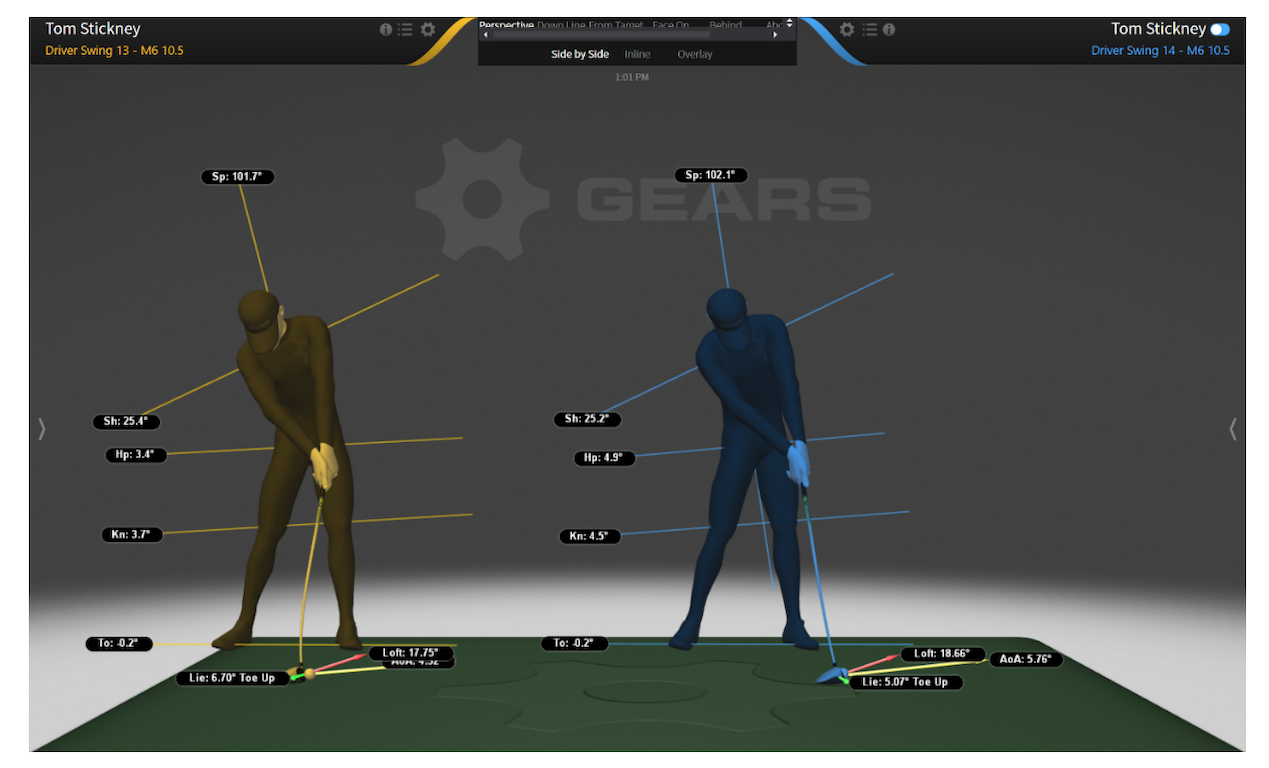
Over time technology has improved so that we (as teachers) can see and understand motion and forces in action during the swing. With that being said we have made TREMENDOUS mistakes over the years as to how we have disseminated this information to the masses! Teachers have been so excited with the advent of new technology that we have vomited everything we have learned and “figured out” thus tying our students into knots. I have been guilty and so has everyone in the business; however, the best teachers quickly evolve out of this trend and shifted their focus on insulating their students from all the stuff they don’t need to know. Frankly a lesson is not about showing the student how smart you are or how much you know as a teacher…your only job is to shift the student’s attention to the “one or two things they need to know” in order to get better!
Technology like 3D Motion Analysis, Force Plates, Trackman and Video have all been around for many years, but instructors have gravitated to them in a certain order (for whatever reason) and I’d like to help better understand this process.
In the beginning golfers hit balls with someone watching and then an opinion was rendered (right or wrong) by the teacher. This was based on what he personally did personally, what he saw others do, or what good players told him that they did. It was a very opinionated system and one that was fraught with inconsistencies but it was all that we had for many, many years.
First came video and we all thought that if you didn’t LOOK perfect you couldn’t play consistently well. But why did weird swings work??? We couldn’t understand.
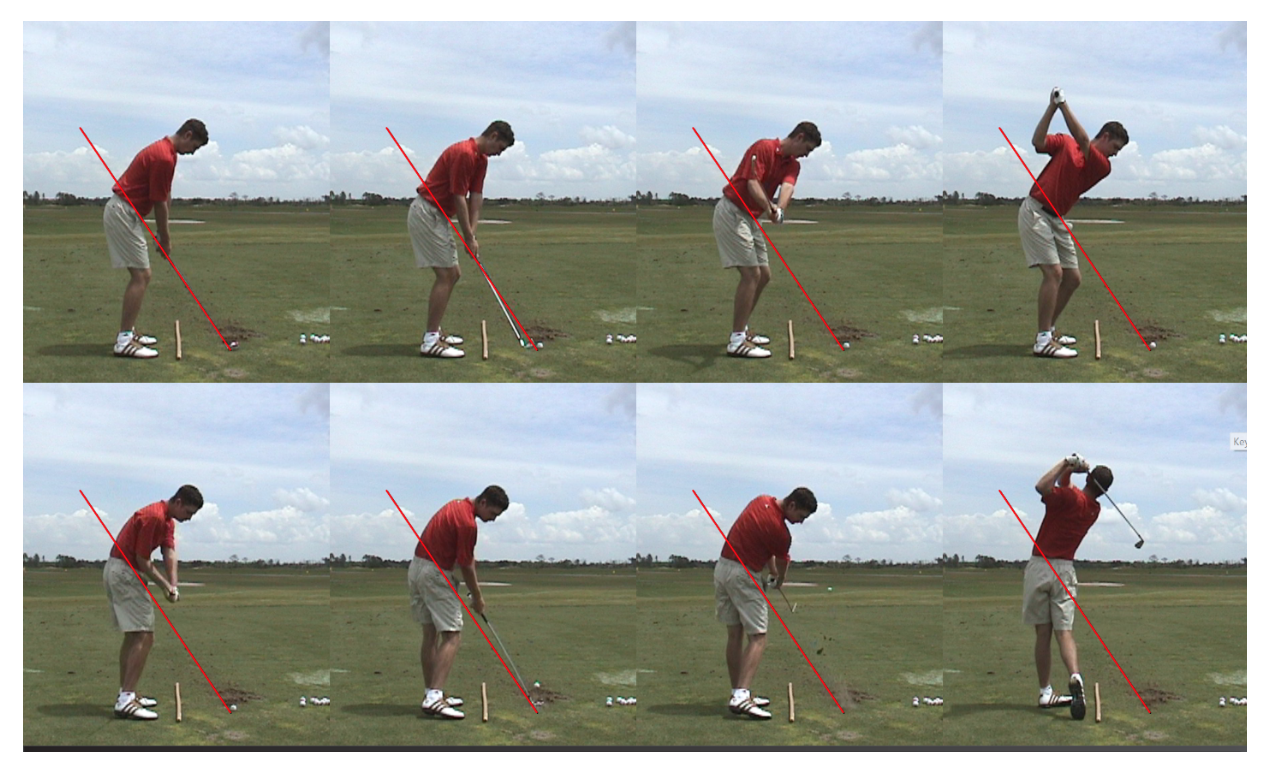
Next, Trackman showed up…
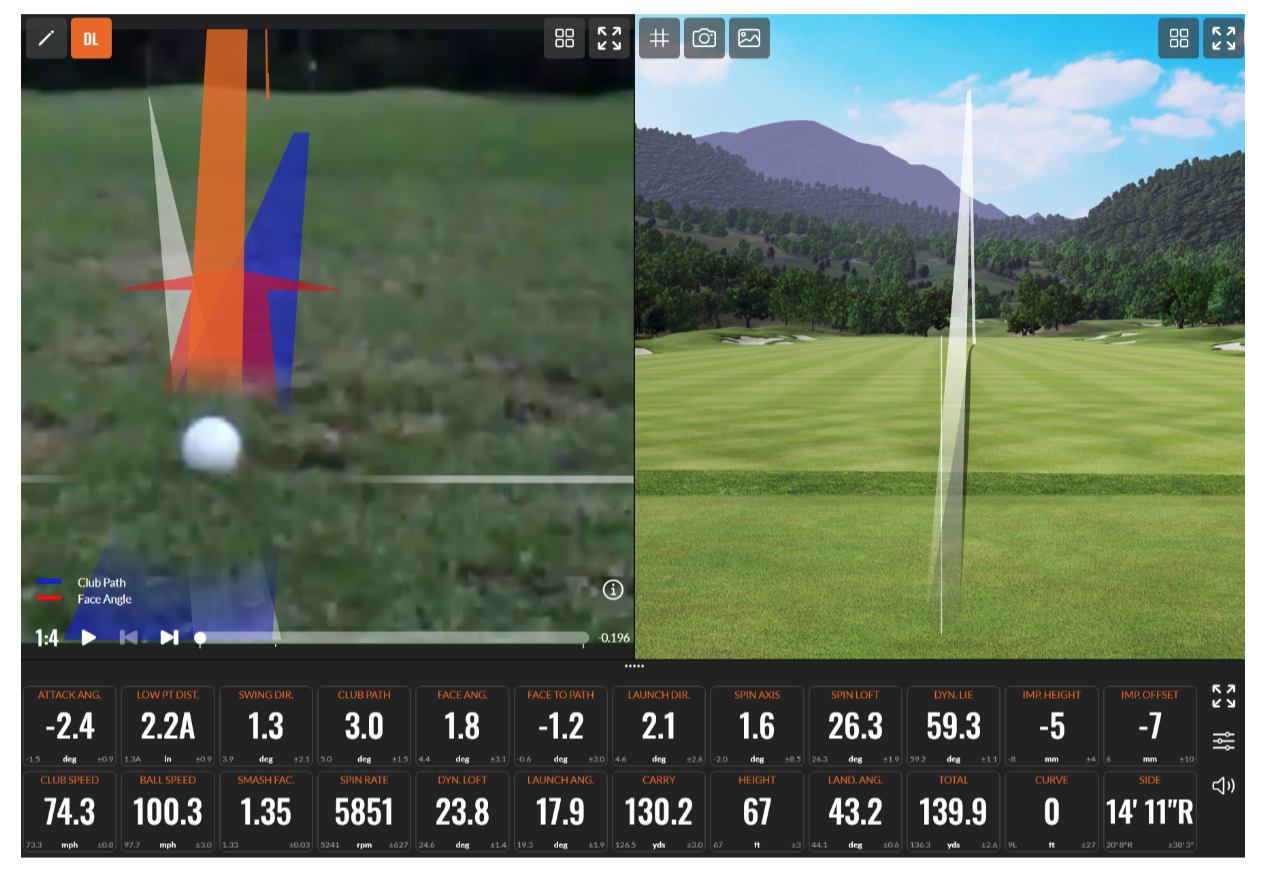
Now we understood why weird swing worked thus you didn’t have to look “pretty” as long as you controlled your “numbers.”
But for a while we hyper-focused on the numbers being too exact- if you didn’t have “these” numbers you couldn’t play.
However, over time we figured out that you can play at any level as long as you had two things: a repeatable pattern (face to path with centered contact) so you could predict ball-flight, and two, the necessary power (ball speed) to hit the ball the distance needed for your level of competition.
While this was great, we were still at a loss regarding the best way to produce power for each golfer…was it adding more swing length, more width in the backswing, making your clubs longer, adding a more aggressive leg drive…what was best?
Then teachers began using the Swing Catalyst…
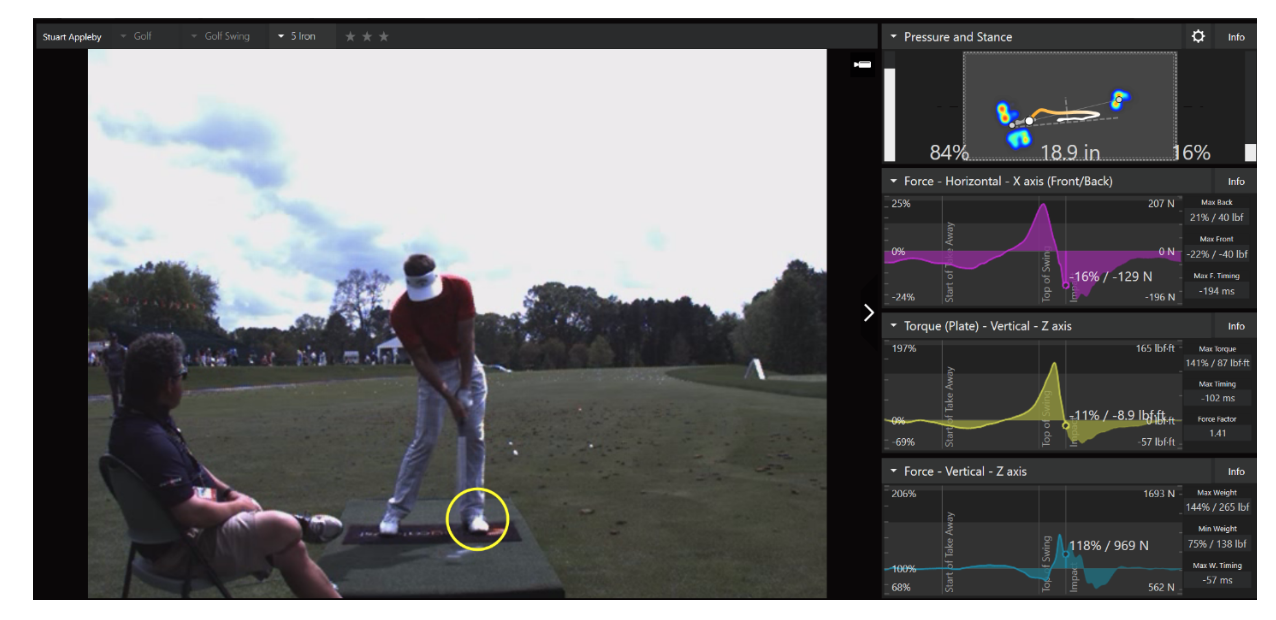
Now we could finally understand what was going on during the swing as it pertained to power and speed production. We could see the video coupled with the way we moved our pressure back and forth, as well as, how and when we used the ground to produce horizontal, rotational, and vertical forces as well.
Now most teachers are consumed with how much and when these forces should occur and this is the same trends we saw with Video and Trackman as well. Eventually most instructors will learn that these forces should definitely be audited, controlled, and improved if necessary but you don’t immediately go in and “fix” these just because! Don’t mistake an idiosyncrasy for a swing flaw. Even their literature and top biomechanistic Dr. Scott Lynn, will tell you that there are exceptions to all the rules and we are not robots whereas changing “X” will make you instantly 30 yards longer.
What I LOVE about the Swing Catalyst and its abilities as a tool is that I can now see “how” a golfer is using the ground, what forces are being used, and when I couple that with what problems the golfer has described, I now have more information to rely on to make a decision. A better educated decision, because I couple this information with the video and Trackman data and I get a much “fuller” picture of where the power leak is coming from and to what degree. Coupling this with the ability to see before and after swings- their forces, club speeds, and ball reactions on Trackman I now am using technology in the best way possible.
But I still can’t get a clear picture of “what” is driving these forces to improve and how the body is “making” it happen. It would be really nice to look inside the golfer and better understand how he is MOVING his body in order to make the changes that we have determined are better for the player. So, what physiologically is actually changing? That is the question I cannot answer.
And finally, the integration with GEARS is just beginning to happen…
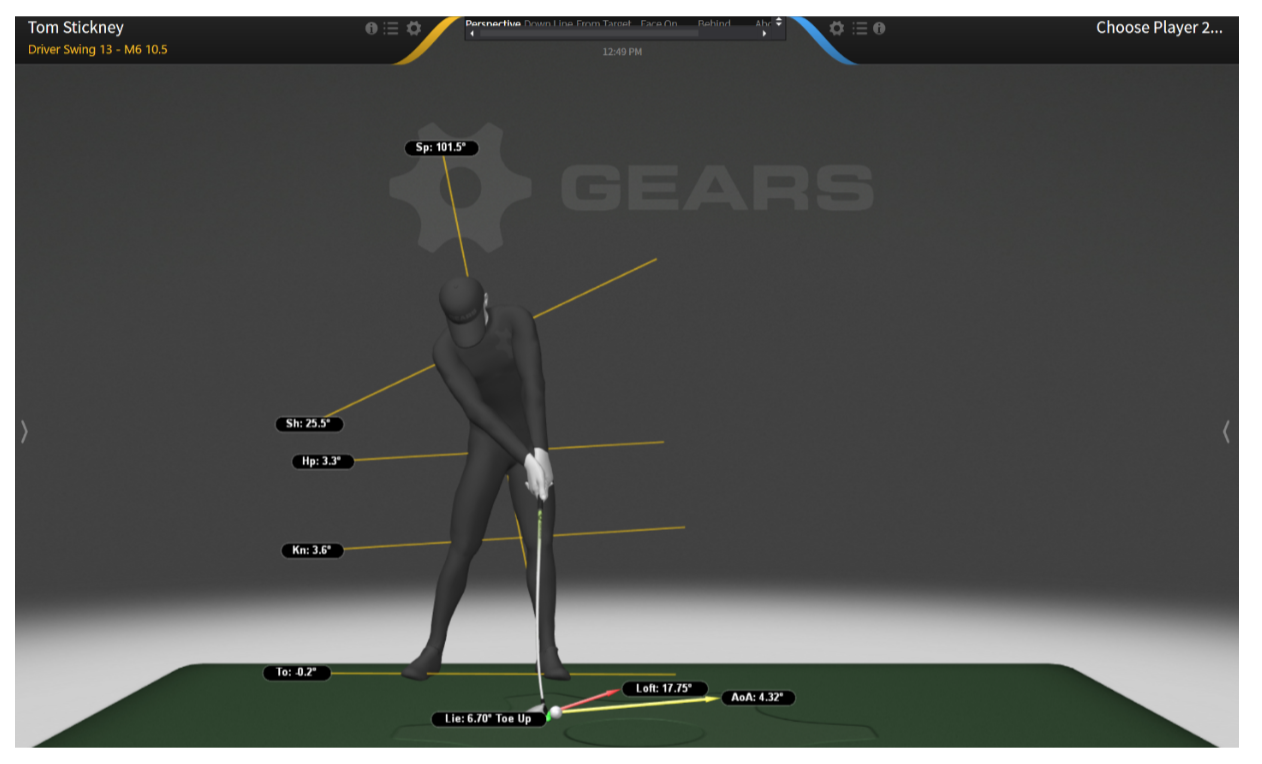
Personally, I don’t know why it’s taken so long for this to happen, perhaps because this technology was expensive when it first came out, but now it’s the same as buying a Trackman or Swing Catalyst. But that’s for another article.
For the first time we can now integrate Video, Trackman, Swing Catalyst, and GEARS together in a “super-system” that will show the instructor anything and everything they need to know about the kinetics and kinematics of the player as they move. It’s power like we’ve never had before!
Now let’s go back to our thought from earlier- we have seen something we needed to change based on the golfer’s desires, audited Trackman and Swing Catalyst and figured out that we want to change the production of “X” force somewhere in the swing. The golfer does so, we see a dramatic improvement, but we don’t know what the golfer actually did differently so we ask them. “How or what did you do?” Their reply was I felt that my lead hip rotated more or slid more but I’m not sure. Now with GEARS we can actually “see and understand” how they altered their motion with the data between two different swings!
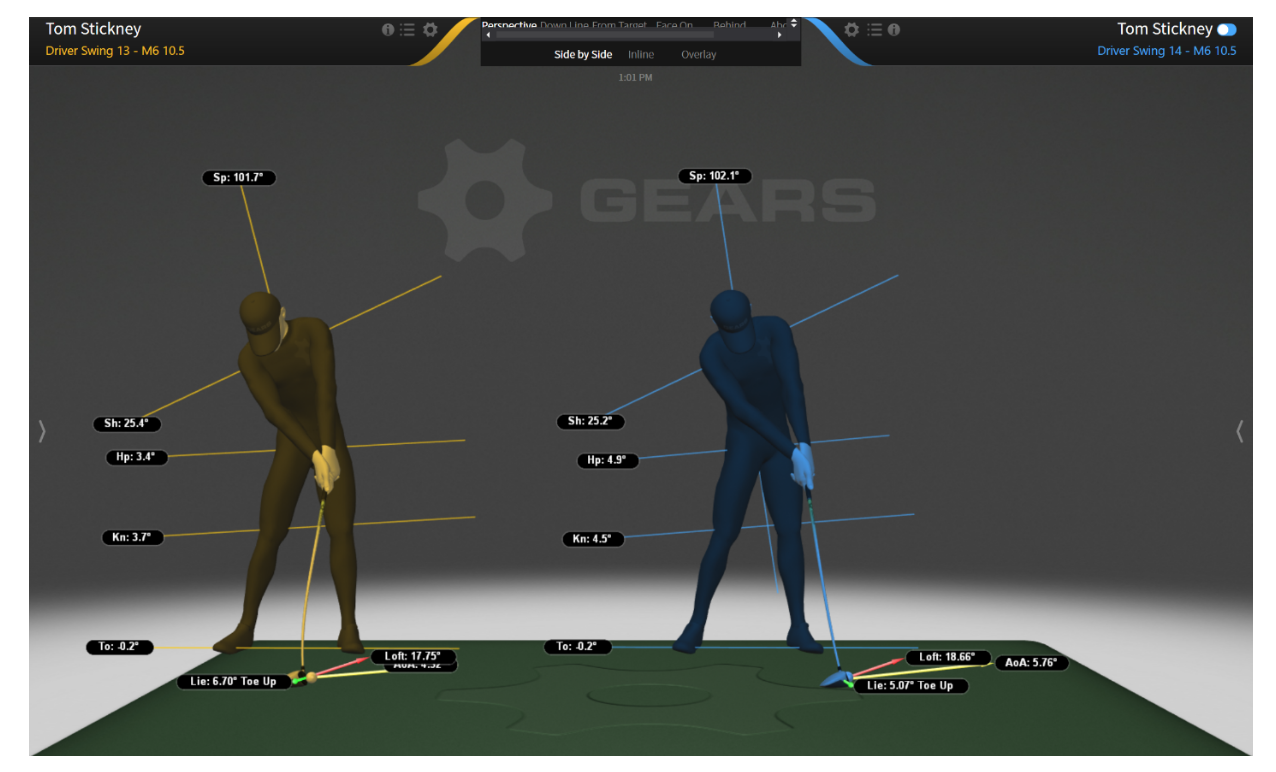
Ah yes, here it is…you DID rotate your hip more from swing one to swing two, so let’s continue to test that “move” to see if it stands up to further testing and how it plays out on the golf course under pressure.
Now we have the data to back up the change so we actually KNOW what went into the golfer changing one pattern for another. There is no guesswork about how, the only grey area is what is the best change for the golfer and that comes from the instructor’s experience, understanding of the problem, knowing the physiology of the body, and auditing their mechanics (with technology) to make a more informed decision as to what direction they should go. At least now we have things like Swing Catalyst to show us forces and torques and GEARS to show us sequencing and numbers so we can compare swings quantitively for a change.
Now it is up to the golf professionals to use all of this in an easily understood and non-technical manner for players of any level. Knowledge is power but it can be a dangerous thing, so tread lightly…
Questions or comments? [email protected]
- LIKE24
- LEGIT2
- WOW4
- LOL1
- IDHT0
- FLOP0
- OB0
- SHANK1
Instruction
The Wedge Guy: The easiest-to-learn golf basic

My golf learning began with this simple fact – if you don’t have a fundamentally sound hold on the golf club, it is practically impossible for your body to execute a fundamentally sound golf swing. I’m still a big believer that the golf swing is much easier to execute if you begin with the proper hold on the club.
As you might imagine, I come into contact with hundreds of golfers of all skill levels. And it is very rare to see a good player with a bad hold on the golf club. There are some exceptions, for sure, but they are very few and very far between, and they typically have beat so many balls with their poor grip that they’ve found a way to work around it.
The reality of biophysics is that the body moves only in certain ways – and the particulars of the way you hold the golf club can totally prevent a sound swing motion that allows the club to release properly through the impact zone. The wonderful thing is that anyone can learn how to put a fundamentally sound hold on the golf club, and you can practice it anywhere your hands are not otherwise engaged, like watching TV or just sitting and relaxing.
Whether you prefer an overlap, interlock or full-finger (not baseball!) grip on the club, the same fundamentals apply. Here are the major grip faults I see most often, in the order of the frequency:
Mis-aligned hands
By this I mean that the palms of the two hands are not parallel to each other. Too many golfers have a weak left hand and strong right, or vice versa. The easiest way to learn how to hold the club with your palms aligned properly is to grip a plain wooden ruler or yardstick. It forces the hands to align properly and shows you how that feels. If you grip and re-grip a yardstick several times, then grip a club, you’ll see that the learning curve is almost immediate.
The position of the grip in the upper/left hand
I also observe many golfers who have the butt of the grip too far into the heel pad of the upper hand (the left hand for right-handed players). It’s amazing how much easier it is to release the club through the ball if even 1/4-1/2″ of the butt is beyond the left heel pad. Try this yourself to see what I mean. Swing the club freely with just your left hand and notice the difference in its release from when you hold it at the end of the grip, versus gripping down even a half inch.
To help you really understand how this works, go to the range and hit shots with your five-iron gripped down a full inch to make the club the same length as your seven-iron. You will probably see an amazing shot shape difference, and likely not see as much distance loss as you would expect.
Too much lower (right) hand on the club
It seems like almost all golfers of 8-10 handicap or higher have the club too far into the palm of the lower hand, because that feels “good” if you are trying to control the path of the clubhead to the ball. But the golf swing is not an effort to hit at the ball – it is a swing of the club. The proper hold on the club has the grip underneath the pad at the base of the fingers. This will likely feel “weak” to you — like you cannot control the club like that. EXACTLY. You should not be trying to control the club with your lower/master hand.
Gripping too tightly
Nearly all golfers hold the club too tightly, which tenses up the forearms and prevents a proper release of the club through impact. In order for the club to move back and through properly, you must feel that the club is controlled by the last three fingers of the upper hand, and the middle two fingers of the lower hand. If you engage your thumbs and forefingers in “holding” the club, the result will almost always be a grip that is too tight. Try this for yourself. Hold the club in your upper hand only, and squeeze firmly with just the last three fingers, with the forefinger and thumb off the club entirely. You have good control, but your forearms are not tense. Then begin to squeeze down with your thumb and forefinger and observe the tensing of the entire forearm. This is the way we are made, so the key to preventing tenseness in the arms is to hold the club very lightly with the “pinchers” — the thumbs and forefingers.
So, those are what I believe are the four fundamentals of a good grip. Anyone can learn them in their home or office very quickly. There is no easier way to improve your ball striking consistency and add distance than giving more attention to the way you hold the golf club.
More from the Wedge Guy
- The Wedge Guy: Golf mastery begins with your wedge game
- The Wedge Guy: Why golf is 20 times harder than brain surgery
- The Wedge Guy: Musings on the golf ball rollback
- LIKE83
- LEGIT13
- WOW4
- LOL1
- IDHT0
- FLOP4
- OB1
- SHANK8
Instruction
Clement: Stop ripping off your swing with this drill!

Not the dreaded headcover under the armpit drill! As if your body is defective and can’t function by itself! Have you seen how incredible the human machine is with all the incredible feats of agility all kinds of athletes are accomplishing? You think your body is so defective (the good Lord is laughing his head off at you) that it needs a headcover tucked under the armpit so you can swing like T-Rex?
- LIKE0
- LEGIT1
- WOW2
- LOL0
- IDHT0
- FLOP0
- OB0
- SHANK2
Instruction
How a towel can fix your golf swing
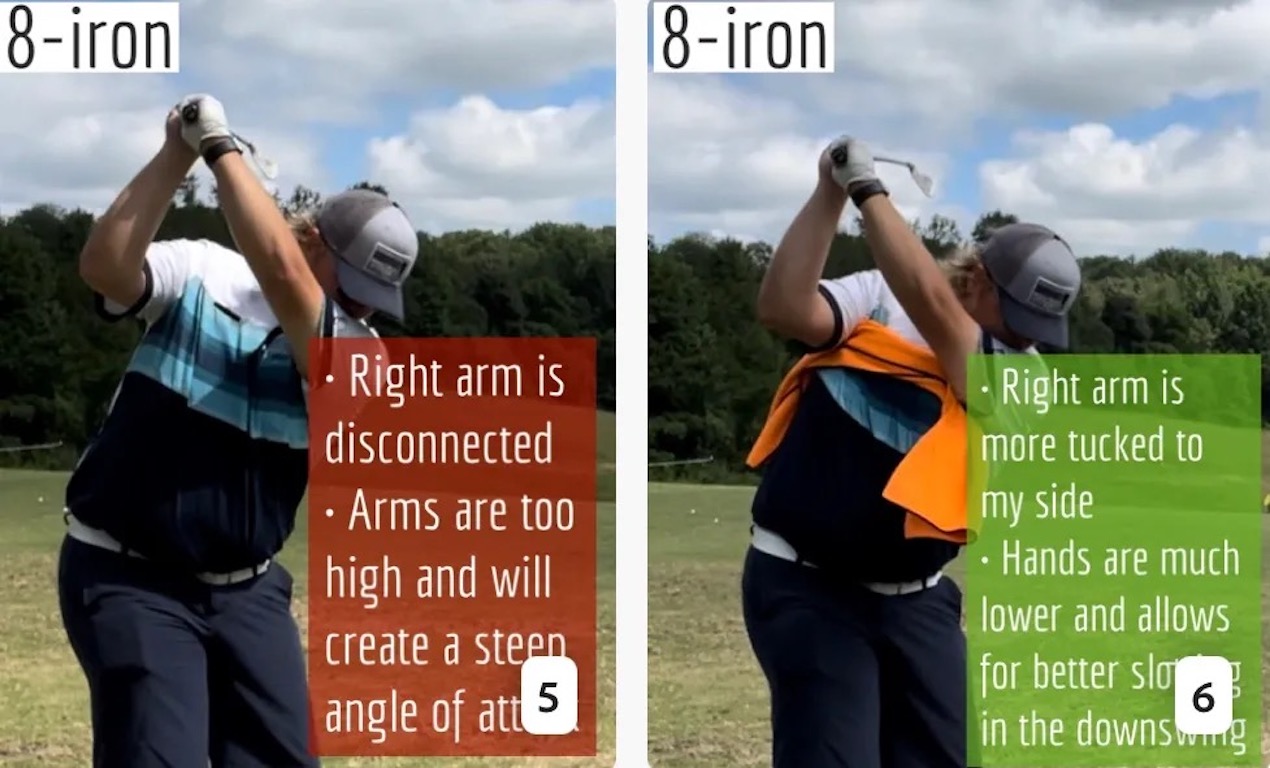
This is a classic drill that has been used for decades. However, the world of marketed training aids has grown so much during that time that this simple practice has been virtually forgotten. Because why teach people how to play golf using everyday items when you can create and sell a product that reinforces the same thing? Nevertheless, I am here to give you helpful advice without running to the nearest Edwin Watts or adding something to your Amazon cart.
For the “scoring clubs,” having a solid connection between the arms and body during the swing, especially through impact, is paramount to creating long-lasting consistency. And keeping that connection throughout the swing helps rotate the shoulders more to generate more power to help you hit it farther. So, how does this drill work, and what will your game benefit from it? Well, let’s get into it.
Setup
You can use this for basic chip shots up to complete swings. I use this with every club in my bag, up to a 9 or 8-iron. It’s natural to create incrementally more separation between the arms and body as you progress up the set. So doing this with a high iron or a wood is not recommended.
While you set up to hit a ball, simply tuck the towel underneath both armpits. The length of the towel will determine how tight it will be across your chest but don’t make it so loose that it gets in the way of your vision. After both sides are tucked, make some focused swings, keeping both arms firmly connected to the body during the backswing and follow through. (Note: It’s normal to lose connection on your lead arm during your finishing pose.) When you’re ready, put a ball in the way of those swings and get to work.
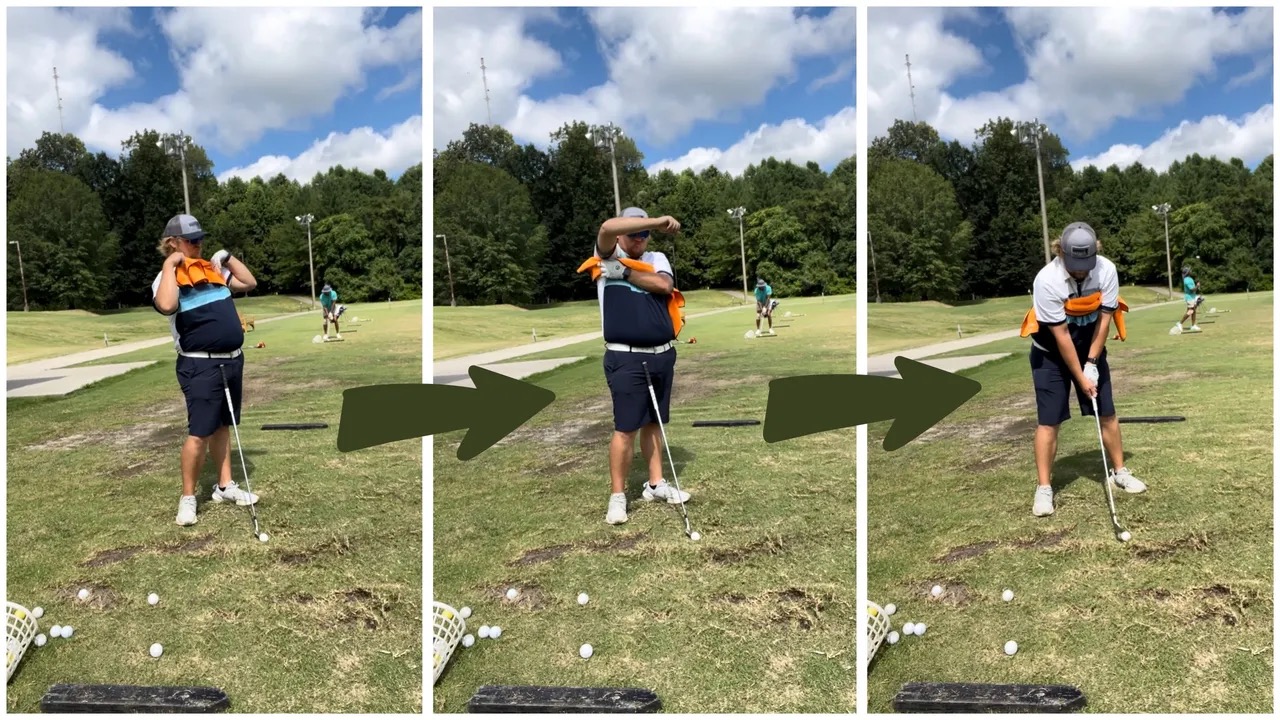
Get a Better Shoulder Turn
Many of us struggle to have proper shoulder rotation in our golf swing, especially during long layoffs. Making a swing that is all arms and no shoulders is a surefire way to have less control with wedges and less distance with full swings. Notice how I can get in a similar-looking position in both 60° wedge photos. However, one is weak and uncontrollable, while the other is strong and connected. One allows me to use my larger muscles to create my swing, and one doesn’t. The follow-through is another critical point where having a good connection, as well as solid shoulder rotation, is a must. This drill is great for those who tend to have a “chicken wing” form in their lead arm, which happens when it becomes separated from the body through impact.
In full swings, getting your shoulders to rotate in your golf swing is a great way to reinforce proper weight distribution. If your swing is all arms, it’s much harder to get your weight to naturally shift to the inside part of your trail foot in the backswing. Sure, you could make the mistake of “sliding” to get weight on your back foot, but that doesn’t fix the issue. You must turn into your trial leg to generate power. Additionally, look at the difference in separation between my hands and my head in the 8-iron examples. The green picture has more separation and has my hands lower. This will help me lessen my angle of attack and make it easier to hit the inside part of the golf ball, rather than the over-the-top move that the other picture produces.
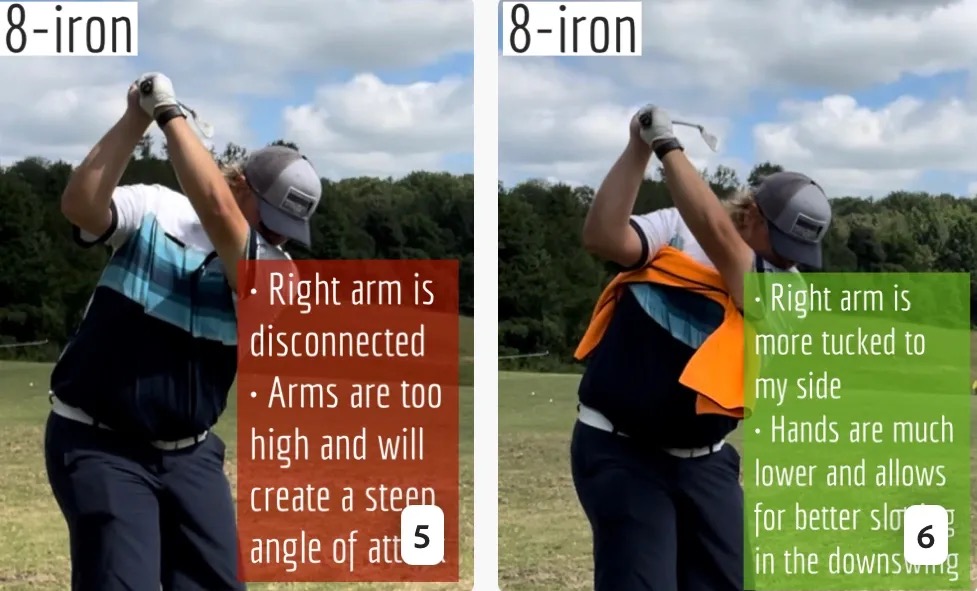
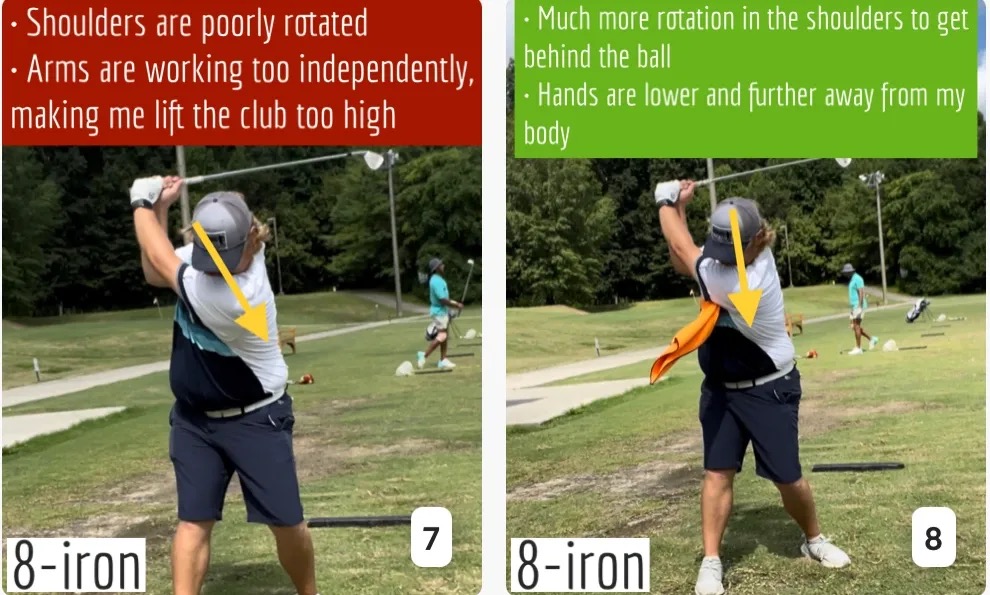
Stay Better Connected in the Backswing
When you don’t keep everything in your upper body working as one, getting to a good spot at the top of your swing is very hard to do. It would take impeccable timing along with great hand-eye coordination to hit quality shots with any sort of regularity if the arms are working separately from the body.
Notice in the red pictures of both my 60-degree wedge and 8-iron how high my hands are and the fact you can clearly see my shoulder through the gap in my arms. That has happened because the right arm, just above my elbow, has become totally disconnected from my body. That separation causes me to lift my hands as well as lose some of the extension in my left arm. This has been corrected in the green pictures by using this drill to reinforce that connection. It will also make you focus on keeping the lead arm close to your body as well. Because the moment either one loses that relationship, the towel falls.
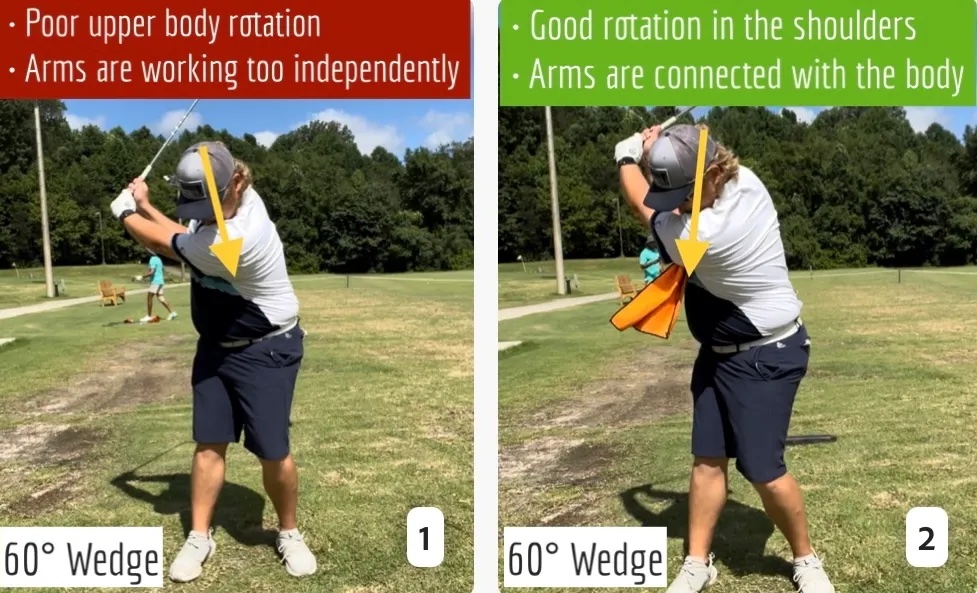
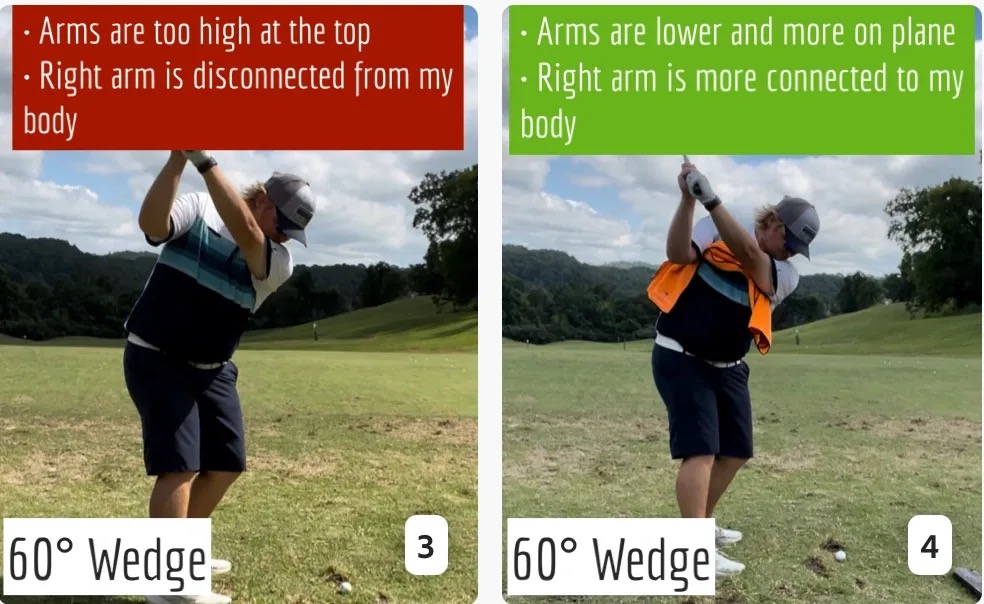
Conclusion
I have been diligent this year in finding a few drills that target some of the issues that plague my golf game; either by simply forgetting fundamental things or by coming to terms with the faults that have bitten me my whole career. I have found that having a few drills to fall back on to reinforce certain feelings helps me find my game a little easier, and the “towel drill” is most definitely one of them.
- LIKE12
- LEGIT1
- WOW2
- LOL0
- IDHT0
- FLOP2
- OB0
- SHANK8
-
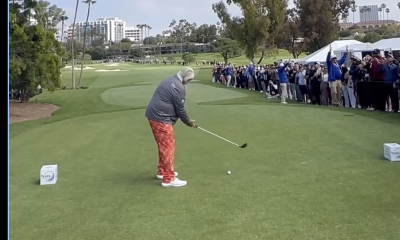
 19th Hole2 weeks ago
19th Hole2 weeks agoJohn Daly stuns fans into silence with brutal opening tee shot on PGA Tour Champions
-
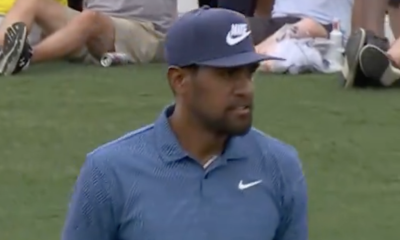
 19th Hole5 days ago
19th Hole5 days agoThings got heated at the Houston Open between Tony Finau and Alejandro Tosti. Here’s why
-

 19th Hole2 days ago
19th Hole2 days agoReport: Tiger Woods has ‘eliminated sex’ in preparation for the 2024 Masters
-
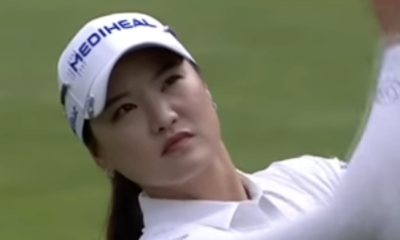
 19th Hole2 weeks ago
19th Hole2 weeks ago2-time major champ announces shock retirement from the sport at age of 33
-

 19th Hole2 weeks ago
19th Hole2 weeks agoEdoardo Molinari reveals the latest PGA Tour golfer to turn down ‘good offer’ from LIV Golf
-
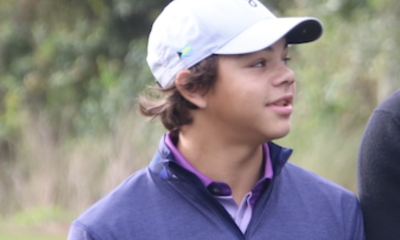
 19th Hole2 weeks ago
19th Hole2 weeks agoCharlie Woods finds it tough going on American Junior Golf Association debut
-
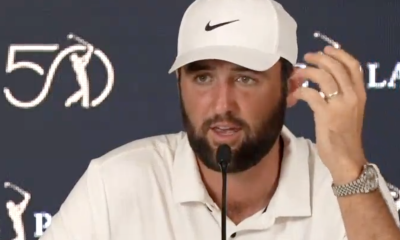
 19th Hole3 weeks ago
19th Hole3 weeks agoScottie Scheffler had an interesting response when asked how he ‘quiets the noise’ following Players victory
-
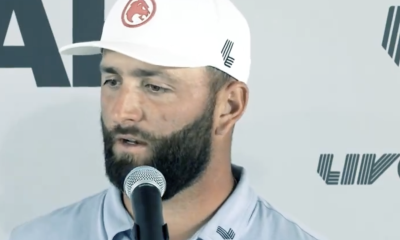
 19th Hole3 weeks ago
19th Hole3 weeks agoJon Rahm dealt fresh blow to hopes of qualifying for 2025 Ryder Cup











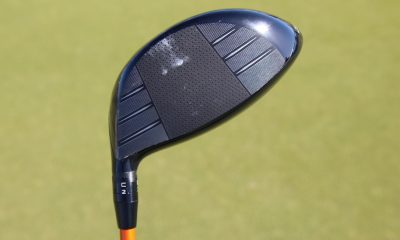

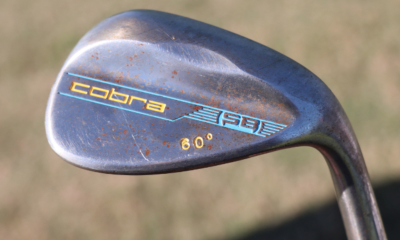



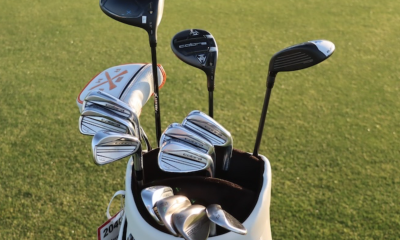

more facts less fiction
Feb 17, 2022 at 5:55 am
We need Gears research done and reported by more people. Right now it is heavily skewed by the AMG guys and their videos, but as you allude to them (and many others) are bias by their beliefs and are altering things to fit their own concepts on setup, movement, and positions.
Andy Walters
Feb 15, 2022 at 5:10 pm
One uses the body to get an expert greenread as well, especially with using the P&SI-EGOS properly as the Surveying tool that it is…